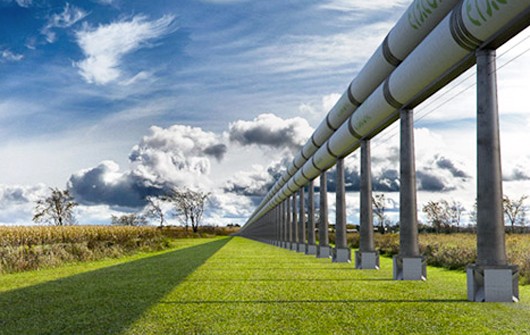New York to Beijing in two hours without leaving the ground?
March 26, 2012 | Source: Gizmag

An ETT (Evacuated Tube Transport) line in which car-sized passenger/cargo capsules would travel (credit: ET3)
The Evacuated Tube Transport (ETT) system (U.S. Patent 5950543, assigned to ET3.com, Inc.) would take passengers from New York to Beijing in just two hours. Advocates of Evacuated Tube Transport (ETT) claim it is silent, cheaper than planes, trains, or cars and faster than jets.
How it would work: put a superconducting maglev train in evacuated tubes, then accelerate using linear electric motors until the design velocity is attained. Passive superconductors allow the capsules to float in the tube, while eddy currents induced in conducting materials drive the capsules. Efficiency of such a system would be high, as the electric energy required to accelerate a capsule could largely be recaptured as it slows.
The maglev tubes are permanently maintained at near vacuum conditions, and the capsules are inserted into and removed from the tubes through airlocks at stations along the route. After the capsules are accelerated to the design velocity (some 4,000 mph or 6,500 km/h), they coast for the remainder of the trip.
While tubes could be networked like freeways, with capsules automatically routed along their trip, local and long-distance trips would require separate maglev tubes to avoid unreasonable scheduling delays.
Members of the ET3 consortium have worked with parties in China, where they say more than a dozen licenses for the company have been sold.
